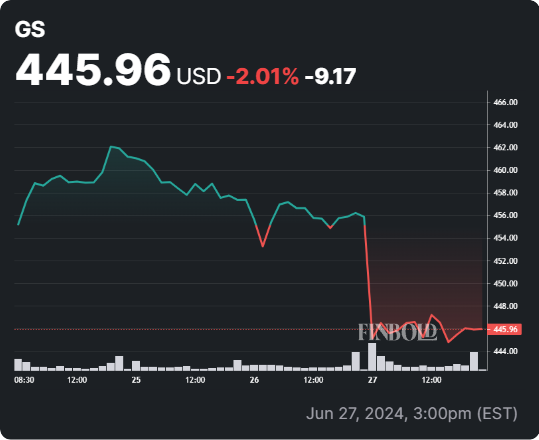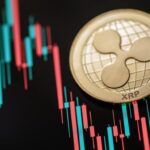The Federal Reserve released its annual stress test results on June 26, evaluating how America’s 31 largest banks would perform in a financial crisis. While the hypothetical recession indicated that all banks are well-protected against an actual downturn, they generally performed worse than in last year’s test.
A report revealed that Goldman Sachs (NYSE: GS) was the “worst hit,” with a year-over-year increase of approximately 100 basis points in its stress capital buffer.
On the other hand, Columbus-based Huntington Bank and New York-based Citigroup were among the best performers.
Notably, Goldman Sachs exceeds the minimum requirement for globally important banks by about 60 basis points, leaving it with less excess capital than similarly sized peers.
Stress test results immediately hurt GS stock
Goldman Sachs’ stock dipped around 2.3% to roughly $442 before recovering in the last five trading sessions, despite having risen more than 15% year-to-date.

Bank of America analysts forecast a 3% decrease in Goldman’s earnings per share due to slower-than-expected buybacks.
However, they remain optimistic about the stock, maintaining a “buy” rating with a price target of $525, believing that an improving baseline in the near term could bolster their bullish investment thesis.
Oppenheimer analysts also rate Goldman as a “buy,” with a target price of $517, while Morningstar analysts suggest a “hold” recommendation with a $417 target. Regardless of these varying perspectives, the overarching sentiment is one of cautious optimism.
Leading banks seem prepared for the stress test
The Federal Reserve’s statement emphasized that all 31 banks tested, including major institutions like Bank of America, JPMorgan Chase, and Morgan Stanley, managed to absorb projected hypothetical losses of $685 billion while remaining above the minimum capital requirements for common equity tier 1 (CET1) banks.
Although the aggregate CET1 capital ratio is projected to drop from 12.7% to 9.9% under stress, this decline is still within the range of recent tests. The conditions for this year’s “severe” global recession scenario included a 40% drop in commercial real estate prices, a substantial rise in office vacancies, a 36% decline in house prices, and a peak unemployment rate of 10%.
Even with the higher projected losses, Vice Chair for Supervision Michael Barr affirmed that large banks have sufficient capital to withstand such a stressful scenario, attributing the increased losses to riskier bank balance sheets and higher expenses.








